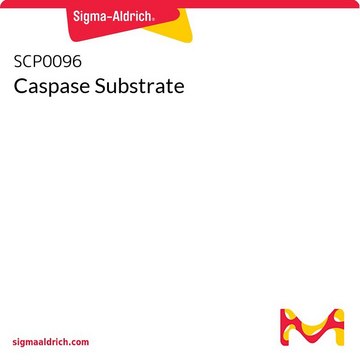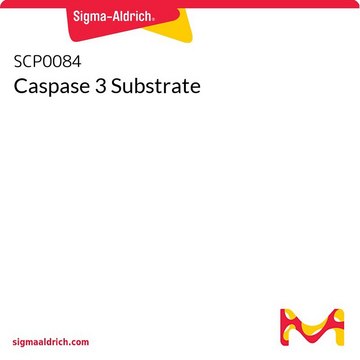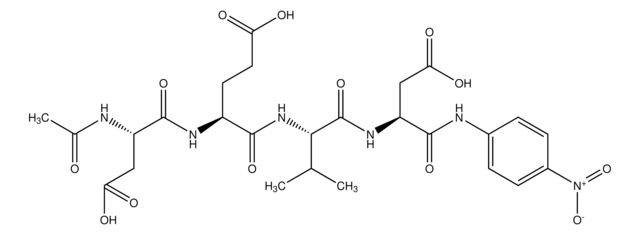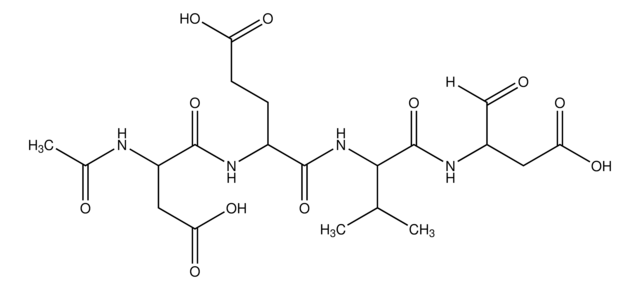SCP0102
Caspase Substrate
≥95% (HPLC), lyophilized
Synonym(s):
Ac-AEVD-pNA
Sign Into View Organizational & Contract Pricing
All Photos(1)
About This Item
Empirical Formula (Hill Notation):
C25H34N6O11
Molecular Weight:
594.57
UNSPSC Code:
12352202
NACRES:
NA.32
Recommended Products
Product Name
Caspase Substrate,
Assay
≥95% (HPLC)
form
lyophilized
composition
Peptide Content, ≥80%
storage condition
protect from light
storage temp.
−20°C
Amino Acid Sequence
Acetyl-Ala-Glu-Val-Asp-p-Nitro-Anilide
Biochem/physiol Actions
The modified tetrapeptide Ac-AEVD-pNA, is a chromogenic substrate for caspase-10.
Choose from one of the most recent versions:
Certificates of Analysis (COA)
Lot/Batch Number
Don't see the Right Version?
If you require a particular version, you can look up a specific certificate by the Lot or Batch number.
Already Own This Product?
Find documentation for the products that you have recently purchased in the Document Library.
S Kojio et al.
FEMS immunology and medical microbiology, 29(4), 275-281 (2000-12-19)
Caspase proteolytic activities, such as caspase-3, -2 and -6, of THP-1 human monocytic cells were markedly increased in a time- and dose-dependent manner by treatment with purified Shiga toxin 1 (Stx1) or Stx2. Caspase-3 activation was strictly correlated with internucleosomal
M Fujino et al.
International immunopharmacology, 1(11), 2011-2021 (2001-10-19)
FTY720, a novel immunosuppressive drug originally derived from a metabolite from Isaria sinclairii, is known to induce apoptosis in lymphocytes. In this study, we investigated the involvement of caspases and mitochondria in FTY720-mediated apoptosis using Jurkat cells, a human T
Vladislava Juric et al.
Molecular and cellular biology, 29(12), 3266-3279 (2009-04-15)
Although Fas ligand (FasL) is primarily expressed by lymphoid cells, its receptor Fas (CD95/Apo-1) is broadly expressed in numerous nonlymphoid tissues and can mediate apoptosis of parenchymal cells upon injury and infiltration of inflammatory cells. Here we show that CCN1
Our team of scientists has experience in all areas of research including Life Science, Material Science, Chemical Synthesis, Chromatography, Analytical and many others.
Contact Technical Service








